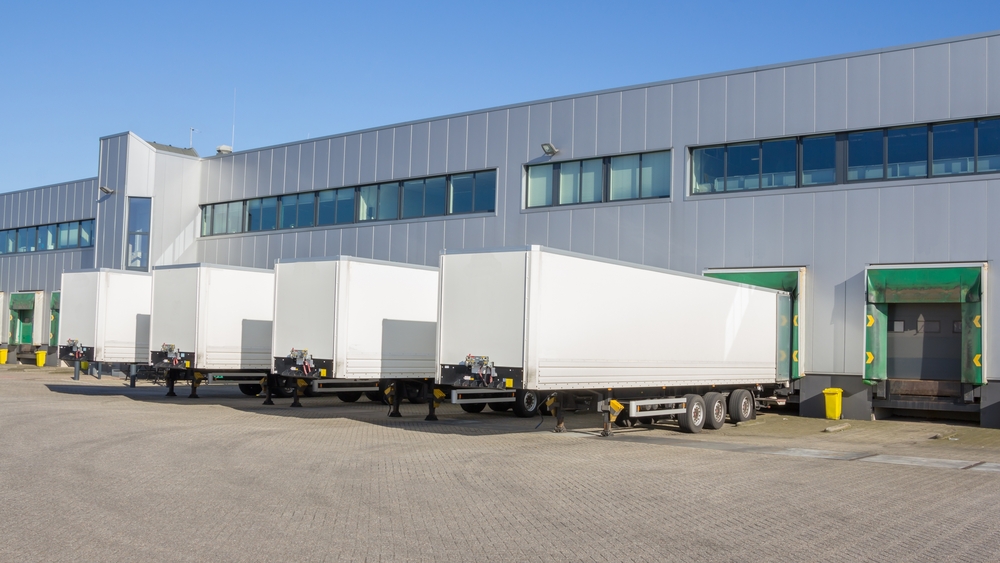In this article, we explain the difference between a warehouse vs distribution center and share ways to streamline warehouse processes and maximize distribution efficiency.
Back in the day, when the supply chain was much less complicated, you could walk up and down the aisles of a warehouse or distribution center and not see much of a difference. Both places were for storing and dispersing products. But nothing is immune to change, and the purposes of the traditional warehouse and distribution center have evolved.
Do you know the differences between a warehouse vs distribution center? It’s time to find out.
Warehouse vs Distribution Center
What is a Warehouse?
A warehouse is a place where goods are stored. Sounds a bit oversimplified, right? If you run a warehouse or even have an understanding of what happens there, you know more happens than that.
In order for goods to be stored at a warehouse, orders have to be placed or scheduled. Goods are then received; stored on shelves or racked; scanned and tracked; and then picked and pulled when it is time for those goods to be shipped.
Warehouses are also not facilities where goods are manufactured or processed. Rather, those items are received, identified, verified, stored, and then retrieved.
Where do you find warehouses? It’s common to find these buildings set up around seaports, airports, and railways. Equipment like cranes or forklifts are used to move shipping containers and pallets from transport into the warehouse, where the items are scanned, cataloged, and shelved.
Depending on the type of warehouse, the interior might be temperature-controlled so that perishable goods, like produce, do not deteriorate while in storage. Other kinds of warehousing includes pet food storage, bulk storage, electronic storage, public warehousing, and medical and pharmaceutical grade storage.
What is a Distribution Center?
A distribution center is often defined as a warehouse or specialized building that has been stocked with products that will be redistributed to wholesalers, retailers, or sent directly to consumers. Distribution centers play a key role in the order fulfillment process, which begins the moment someone places an order.
You might also see a distribution center referred to as a DC, warehouse, cross-dock facility, package handling center, fulfillment center, or a bulk break center.
Now, it’s important to understand that while a distribution center can be called a warehouse, you can’t call a general warehouse a DC. Not unless the warehouse also handles order processing and order fulfillment. A distribution center is called such because the principal purpose is receiving orders and getting the items shipped out.
Some distribution centers might also include light assembly of items, processing, quality control, repackaging, and other tasks required to fulfill orders.
Differences Between Warehouse vs Distribution Center
Since supply chains have evolved and become much more complex than they were in the past, the differences between traditional warehouses and distribution centers have become more apparent. Some might say that the differences are just semantics and that there are really no dissimilarities, but that is false.
Warehouses and distribution centers have unique qualities. Yes, they are both for receiving, storing, managing, picking and pulling, and delivering goods; but there is more to it than that.
Here are some of the key differences between the two:
- Warehouses are mainly used for storing products until they are needed. Distribution centers store products as well as perform product mixing, cross-docking, order fulfillment, and packaging.
- Warehouses store products for longer periods of time. On the other hand, distribution centers have a faster flow rate through storage to the store or customer. This means that products sit in store for less time.
- Distribution centers are considered the bridge between suppliers and consumers, since it is where items are packaged and sent out. The role of the warehouse is much less focused on consumers and more on storing the items.
- Orders for retail and warehouses often pass through a distribution center, not a warehouse. This is because warehouses do not typically server customers in the way a distribution center does.
- Operations at warehouses are less intricate than at a distribution center. Warehouses have fewer functions, while distribution centers handle order processing, transportation management, inventory and warehouse management, and more.
Both continue to exist as fundamental parts of the supply chain. Since long-term and short-term storage is a necessity, it is not uncommon to find warehouses and distribution centers being utilized to meet seasonal demands.
Ready to Optimize Your Warehouse or Distribution Center?
While the difference between warehouses vs distribution centers is rather subtle, the need for management in both instances is not. Warehouses and distribution centers have their purposes, but both can influence customer satisfaction to some degree.
If you want to optimize your warehouse or distribution center, WiSys can help. With our unique warehouse and distribution software, you can streamline the processes along the supply chain and maximize the efficiency of warehouses and distribution centers. Give us a call to get started!



